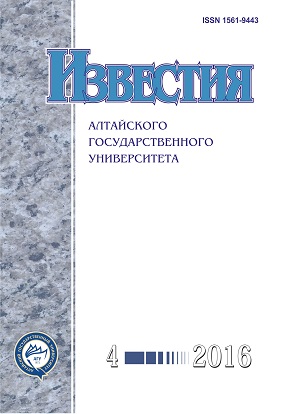Educational Institutions of the Cossack Emigration in the 1920-s — 1930‑s: from History of Cultural and Educational Activity of the Russian Abroad
Abstract
The article researches such direction of cultural and educational activity of the Cossack emigration of 1920s — 1930s as formation and development in the foreign land of the Cossack military colleges and military schools. The problem, chronological and comparative methods, anthropological approach allowed the authors to analyze the activity in emigration of the Atamansky Donsky and the Kuban general M.V. Alekseev of military colleges, two Don military schools. Studying this problem the authors have come to the following conclusions. First, the Cossack army atamans and the governments in incredibly difficult conditions of emigrant life managed to maintain training of the officers. Secondly, curricula and programs of military colleges and military schools allowed preserving Russian and Cossack, traditions, Russian, literature, culture of the Homeland. As the result, Russian emigrants did not assimilate to the foreign-language environment. Thirdly, graduates of schools and cases received practical working skills, learned languages of the country of residence that allowed them to adapt to life and to earn money in Bulgaria and Yugoslavia, to enter higher educational institutions, including Yugoslavian military academy and to serve as officers in the Yugoslavian army. DOI 10.14258/izvasu(2016)4-29Downloads
Metrics
References
Волков С.В. Русская военная эмиграция: издательская деятельность. - М., 2008.
Государственный архив Российской Федерации (ГАРФ). - Ф. 6038. - Оп. 1. - Д. 29.
Бегидов А.М., Ершов В.Ф., Пивовар Е.И. Военноучебные заведения зарубежной России. 1920-1930 годы. - Нальчик, 1999.
ГАРФ. - Ф. 6038. - Оп. 1. - Д. 22.
ГАРФ. - Ф. 6038. - Оп. 1. - Д. 23.
ГАРФ. - Ф. 6038. - Оп. 1. - Д. 27.
Архив внешней политики Российской империи. - Ф. 166. - Оп. 508/3. - Д. 43.
ГАРФ. - Ф. 6038. - Оп. 1. - Д. 1.
Губенко О.В. Терское казачье войско в XV-XXI вв. (Влияние государства на социально-экономические аспекты казачьей жизни). - [Б.М.], 2007.
Рябова В.И. Российская эмиграция в Африке в 1920-1945 гг. - М., 2005.
Гончаров Ю. Донской кадетский корпус в Египте // Африка глазами эмигрантов: Россияне на континенте в первой половине ХХ века / сост. А.Б. Летнев, В.П. Хохлова. - М., 2002.
Козлитин В.Д. Русская и украинская эмиграция в Югославии (1919-1945 гг.). - Харьков, 1996.
Казимиров-Клочков. Донской Императора Александра III кадетский корпус // Часовой (Париж). - 1932. - № 90. - 15 дек.
Воробьев Н. Корпус в Горажде // Донской Императора Александра III кадетский корпус. 1883-1933 (Новочеркасск - Стришите - Билега - Горажде). Воспоминания кадет Донского корпуса. - Мадрид, 1974.
Семченко А.В. Внешкольное образование российского зарубежья: методология, теория, практика : монография. - Тамбов, 2002.
Донской Императора Александра III кадетский корпус. 1883-1933 (Новочеркасск - Стрниште - Билеча - Горажде). Воспоминания кадет Донского корпуса. - Мадрид. 1974.
Н.М. Казачья жизнь: Донские станицы за рубежом // Иллюстрированная Россия. (Париж). - 1932 - 8 окт. - № 41 (387).
Тесемников В.В. Российская эмиграция в Югославии (1919-1945 гг.) // Вопросы истории. - 1988. - № 10.
Izvestiya of Altai State University is a golden publisher, as we allow self-archiving, but most importantly we are fully transparent about your rights.
Authors may present and discuss their findings ahead of publication: at biological or scientific conferences, on preprint servers, in public databases, and in blogs, wikis, tweets, and other informal communication channels.
Izvestiya of Altai State University allows authors to deposit manuscripts (currently under review or those for intended submission to Izvestiya of Altai State University) in non-commercial, pre-print servers such as ArXiv.
Authors who publish with this journal agree to the following terms:
- Authors retain copyright and grant the journal right of first publication with the work simultaneously licensed under a Creative Commons Attribution License (CC BY 4.0) that allows others to share the work with an acknowledgement of the work's authorship and initial publication in this journal.
- Authors are able to enter into separate, additional contractual arrangements for the non-exclusive distribution of the journal's published version of the work (e.g., post it to an institutional repository or publish it in a book), with an acknowledgement of its initial publication in this journal.
- Authors are permitted and encouraged to post their work online (e.g., in institutional repositories or on their website) prior to and during the submission process, as it can lead to productive exchanges, as well as earlier and greater citation of published work (See The Effect of Open Access).








